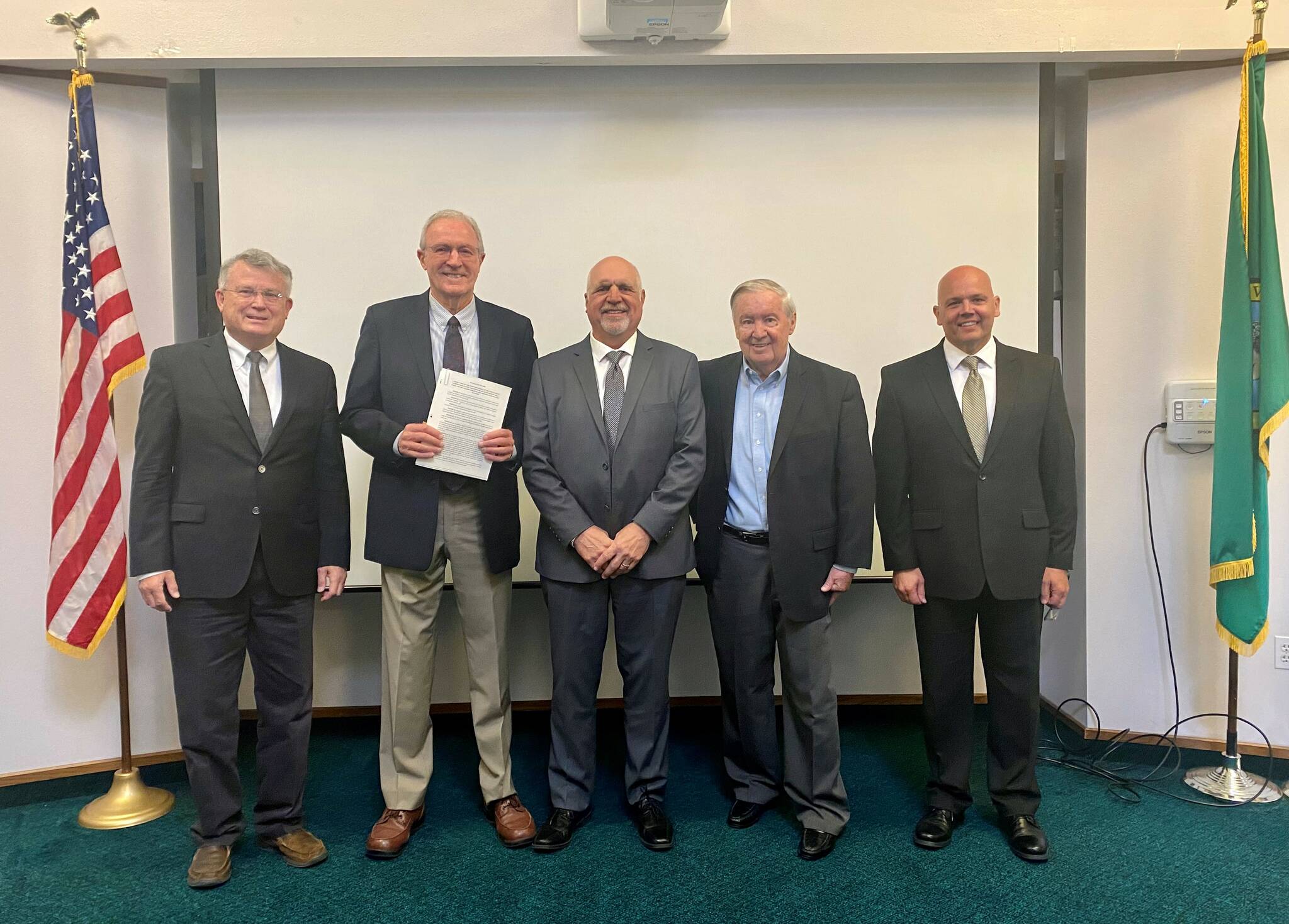At a special meeting Wednesday morning, the Port of Grays Harbor Commission inked a resolution creating the county’s first tax increment financing area, a tool that will provide a key piece of funding for its upcoming expansion project.
The port will use the tax area to capitalize on new property tax revenue generated by an expected $123 million private development on port property. Starting in 2024, and for a period of 25 years, all future property taxes within a 15-acre piece of port land will go directly back to the port for investment in its share of the Terminal 4 Expansion and Redevelopment Project.
After several public hearings and development of the idea over the last several months, port commissioners passed the resolution with little discussion.
“This is going to be one of the best things that has happened to the county of Grays Harbor and the city of Aberdeen,” said port Commissioner Phil Papac. “I’m extremely happy with how it’s come together.”
In March of 2022, Ag Processing, Inc., or AGP, a major soybean producer based in the Midwest, opted to expand its shipping operations through the Port of Grays Harbor.
AGP processes soybeans to create two products: oil and meal. Increased demand for low-carbon fuels led the company to ramp up its bean-crushing capacity to meet the need for oil, and, in turn, is left with large amounts of meal.
The market for meal lies in Asia, putting the Port of Grays Harbor, the middleman, in prime position to ship the product overseas.
By 2025, AGP wants to ship twice as much meal overseas as it does today. It plans to build additional storage at its existing port facility at Terminal 2, and a towering ship loader at Terminal 4 to get meal directly from trains to ships, at a cost of $123 million dollars.
To facilitate that investment, the port will contribute $47 million to add 10 miles of rail, refurbish a cargo area and modernize its dock. A federal grant worth $25 million will finance about half of the project.
About $10 million of the port’s portion will come from the new tax increment financing area, or TIF area. The approved TIF area lies directly over Terminal 4. Since the port, a government entity, owns the land, it’s currently tax-exempt and generates no revenue for local taxing districts, including the City of Aberdeen, Timberland Library, Grays Harbor County, Harbor Regional Health Community Hospital, and several state school levies.
But in the next two years, AGP will construct $123 million of improvements there and begin to pay personal property taxes on that investment.
When a TIF area is created, the property tax base within the area freezes. Rather than flowing to other local districts, the new revenue will go directly to the port.
State school levies are exempt from the TIF area.
In total, the levy rate of the TIF area is $3.91 per $1,000 of assessed value. In the next 25 years, the TIF area will generate nearly $16 million in tax revenue, enough to pay back $10 million in bonds sold by the port in the near future.
In 2048, the TIF will sunset, and the local districts will resume collecting property taxes on the area. By that time, AGP’s investment will have a projected value of $250 million.
Local governments — cities, counties, and ports, specifically — were given authority to create TIF areas by the Washington State Legislature in 2021. Washington became the 49th state in the nation to implement tax increment financing.
Contact reporter Clayton Franke at 406-552-3917 or clayton.franke@thedailyworld.com.


